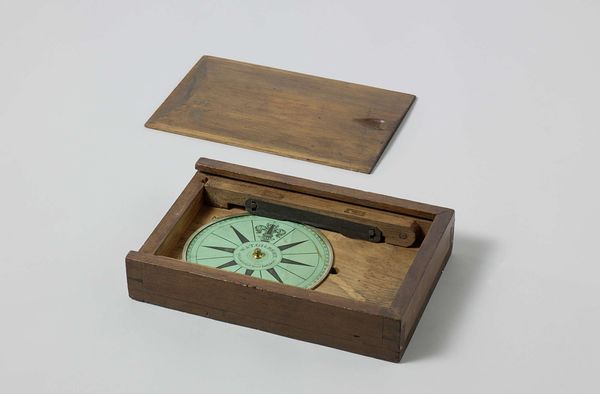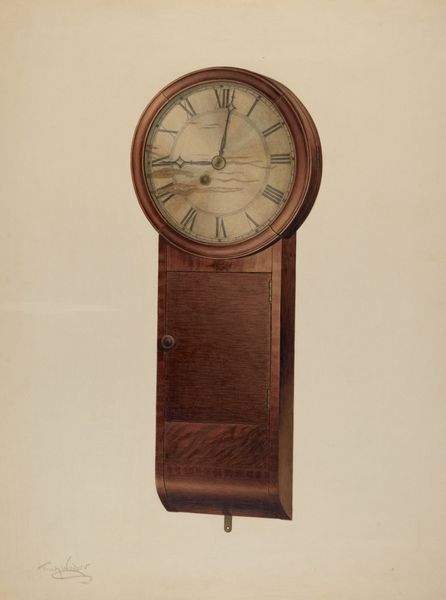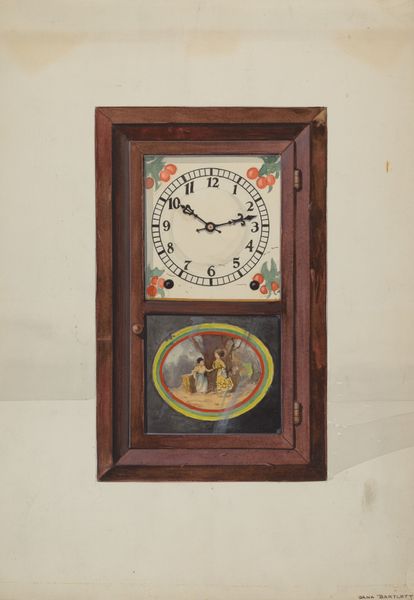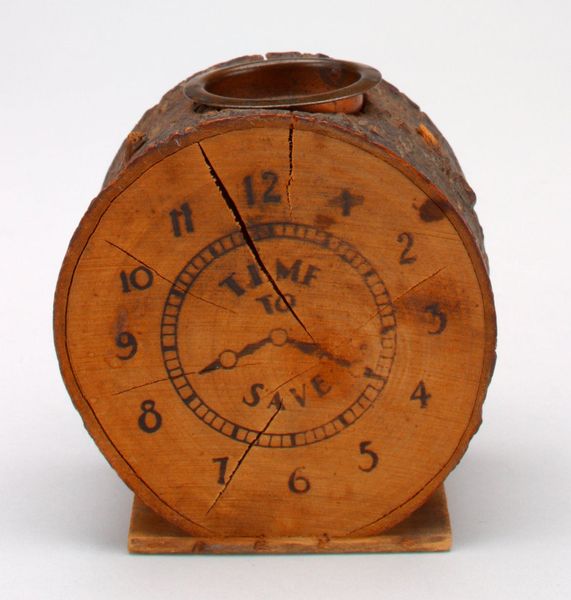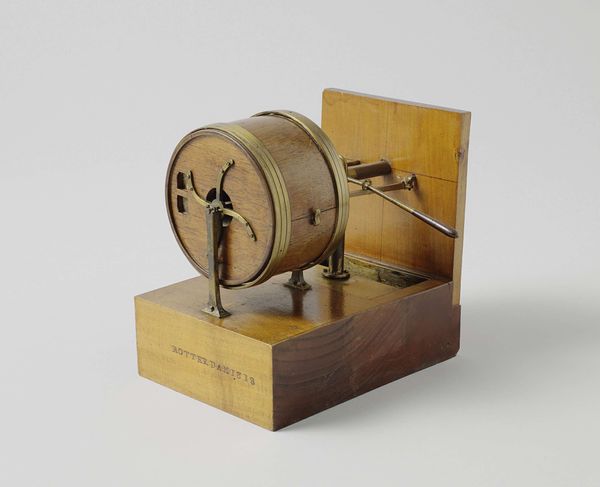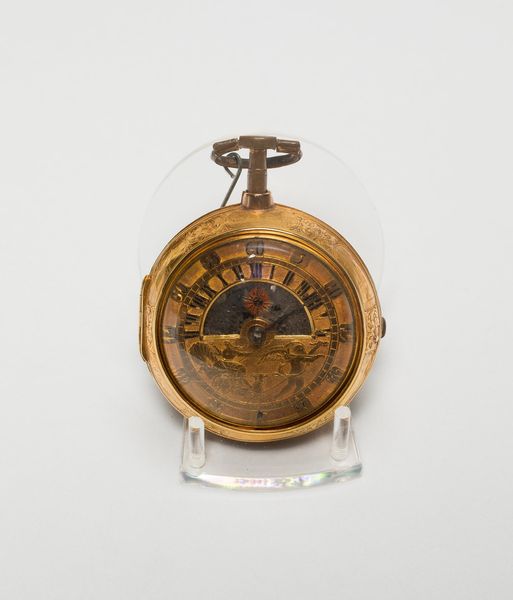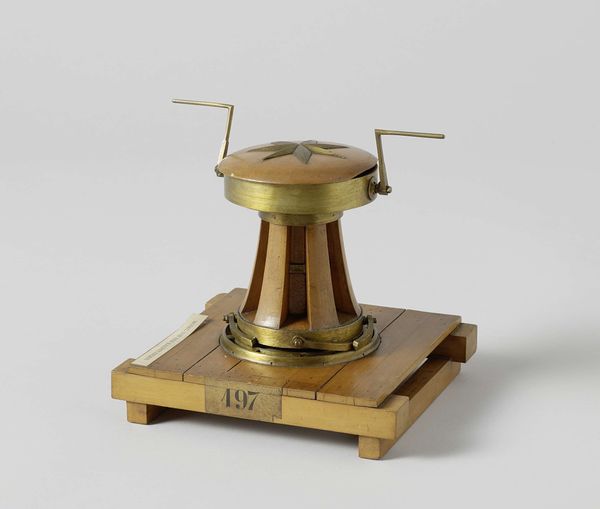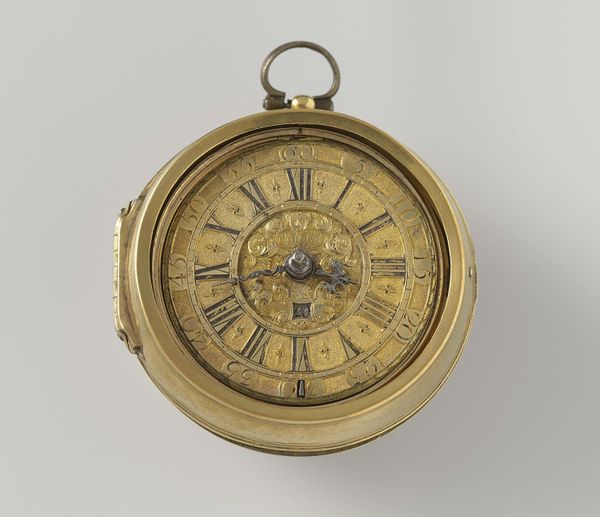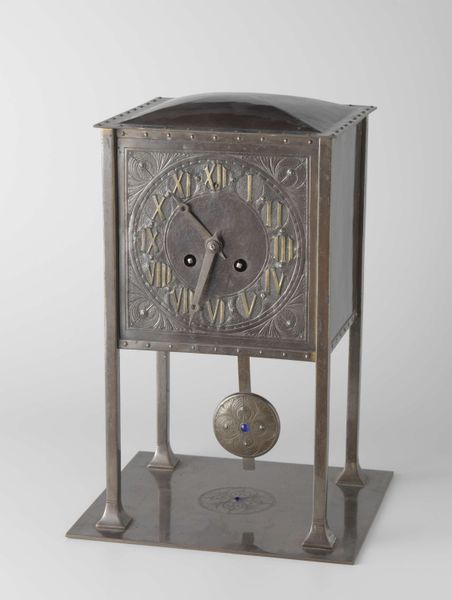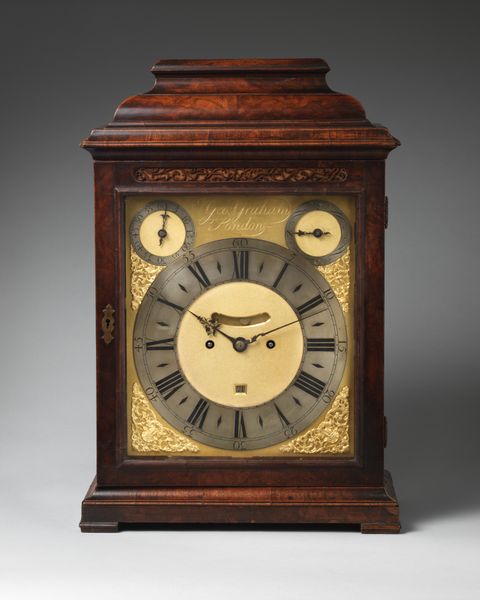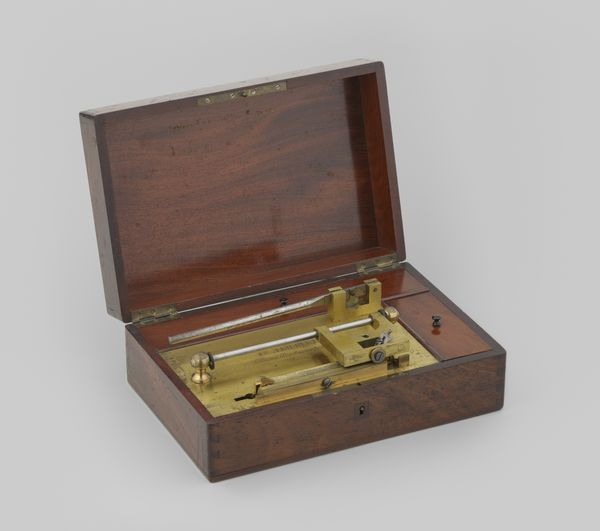
metal, wood
#
metal
#
geometric
#
ancient-mediterranean
#
wood
Dimensions: height 16 cm, width 39 cm, depth 40 cm
Copyright: Rijks Museum: Open Domain
Curator: We're standing before an Azimuth Compass, crafted around 1750 by Johannes van Keulen I. The instrument is constructed from a combination of wood and metal. Editor: There’s something about the patina of the materials, especially the brass. It evokes a sense of history and journeys undertaken, and maybe lost lives on those journeys, connecting the compass to themes of colonialism. Curator: The compass was, of course, crucial for navigation and exploration during this period, playing a vital role in maritime trade and colonial expansion, enabling movement, mapping, and claiming territories. Keulen's workshop in Amsterdam was renowned for its charts and navigational instruments. Editor: Absolutely, this wasn’t just about finding a route, it was a power dynamic, enabling certain people to dominate and reshape the world. I think we need to remember that tools like this were never neutral; they helped in asserting dominance. Curator: True. The Dutch East India Company, for example, relied heavily on such instruments. Now, observe the construction: the intricate rose compass points, housed within a wooden case. Each part meticulously crafted and positioned. Editor: And those rose compass points, historically so beautiful and visually striking, could be viewed now, too, as representations of ideologies of control. Thinking of how they served the project of colonialism, and the imposition of power and its cartographic representation. Curator: A good point, reminding us of its role in global history, intertwined with complex social and political issues. It brings attention to the colonial projects. This compass does provide a lens into these times and how we think about tools. Editor: Thinking about how technologies can never be considered as existing in an apolitical context invites critical conversations about power, knowledge, and how societies have used tools. It invites complex discussions on justice, accessibility, and what technologies mean in the era of climate crisis and geopolitical instabilities.
Comments
No comments
Be the first to comment and join the conversation on the ultimate creative platform.


